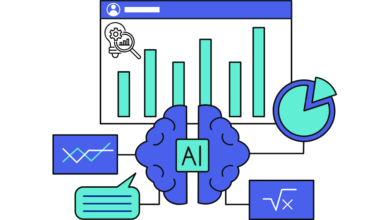
Most companies have experienced unplanned downtime and subsequent issues and losses. This is where Artificial Intelligence (AI) can make a significant impact. By leveraging data analytics for predictive maintenance, companies can minimize these instances of lost productivity and achieve a more efficient and safer work environment, among other things.
As a result, processes like data collection, preprocessing, analysis, predictive modeling, condition monitoring, and maintenance scheduling become easier and streamlined. While those reasons alone are enough for anyone looking to save money and face fewer problems – regardless of industry – AI platforms can bring operations to the next level of efficiency.
The Impact of AI
What Artificial Intelligence (AI) has demonstrated in just a few years is astounding. Enabled by Machine Learning (ML), Natural Language Processing (NLP), and the Internet of Things (IoT), AI can analyze and learn from historical and concurrent data, whether through text or images, and offer solutions such as anomaly detection, accurate outcome prediction, and continuous self-improvement for higher levels of accuracy.
ML algorithms are the foundation of AI-powered predictive models. They analyze data, spot trends, and forecast when equipment will break down or requires maintenance. NLP technology feeds data to the algorithms from maintenance logs, service reports, and technical manuals, while IoT devices and sensors collect real-time information on equipment performance.
However, developing an AI predictive model is not as simple as flipping a switch. Companies could face data scarcity, lack of data quality, and collection challenges. In addition to these concerns, businesses transitioning to AI predictive models may experience integration obstacles, a shortage of skilled IT professionals, high initial investment costs, and anxious employees who fear losing their jobs.
To incorporate AI predictive platforms, businesses must upskill their IT staff, buy off-the-shelf platforms, or enlist the software development services of a third-party company. Making this decision requires extensive planning.
Specific Use Cases and Benefits Across
Regardless of size, companies can proactively identify maintenance needs and prevent financial and productivity losses that occur with downtime. Moreover, predictive maintenance reduces costs by minimizing unnecessary maintenance, optimizing spare part usage, and extending the lifespan of the equipment.
Industries that are taking advantage of predictive analytics include:
- Manufacturing: AI platforms reduce production line setbacks, optimize schedules, improve supply chains, identify defects, increase quality control, manage inventory levels, and allocate spare parts. Through automated real-time monitoring, manufacturers can make immediate data-driven decisions.
- Transportation: Predictive maintenance is a core function of AI-powered fleet management software because it helps keep vehicles safer to drive, on the road longer, and more durable. Real-time monitoring of tire pressure, brake pad wear and tear, battery health, and engine optimization lets transportation and logistics sectors operate efficiently.
- Healthcare: Preventing medical equipment failure saves patient lives and prevents disruptions in care. In addition to predictive maintenance, AI applications help optimize hospital operations and resource usage, including bed management, staffing, and supply chains. Predictive AI models can analyze patient vitals to identify patients whose health will decline, predict hospital readmissions, and provide information on drug repurposing.
- Energy: Power grid failures can cause catastrophic consequences for millions of people. Predictive maintenance helps keep energy flowing and optimizes energy production and distribution. AI systems can predict turbine failures, monitor boiler efficiencies, and maintain grid stability. Elsewhere, AI can help detect pipeline leaks and optimize drilling operations.
Beyond Predictive Maintenance
The transformative power of AI predictive maintenance is undeniable.
Companies that leverage the power of AI, ML, and IoT will reap unparalleled operational efficiencies, cost savings, and increased safety for all involved. Regardless of their industries, businesses adopting AI predictive models will gain a competitive advantage over those that do not.
Software developers are continuously exploring new technologies to maximize AI’s potential. They are taking predictive models and maintenance to new heights by implementing technologies like edge computing, 5G networks, and more advanced AI algorithms.
Full-fledged, self-optimizing systems that make decisions without human input are already emerging. These systems will automatically adjust production schedules to adapt to the downtime, or supply chains will self-adjust to real-time factors like equipment failure, demand spikes, bad weather, and geopolitical disruptions.
Another new trend is edge computing, which involves installing servers closer to where data is generated, providing faster real-time responses. 5G wireless networks, the new standard, allow faster communications between AI applications and the equipment they monitor. Augmented decision-making dashboards will create a higher level of sophistication for intelligent and actionable insights.
Saving money, increasing productivity, and creating a safe work environment are three convincing reasons to adopt AI predictive maintenance platforms. If their companies have the resources to implement an AI system, managers across countless industries will start taking advantage of the power of AI predictive maintenance, which “can lead to savings of 20% or more on maintenance costs for key systems.”
That’s today’s potential savings. Just wait to see what tomorrow’s advances will bring.



